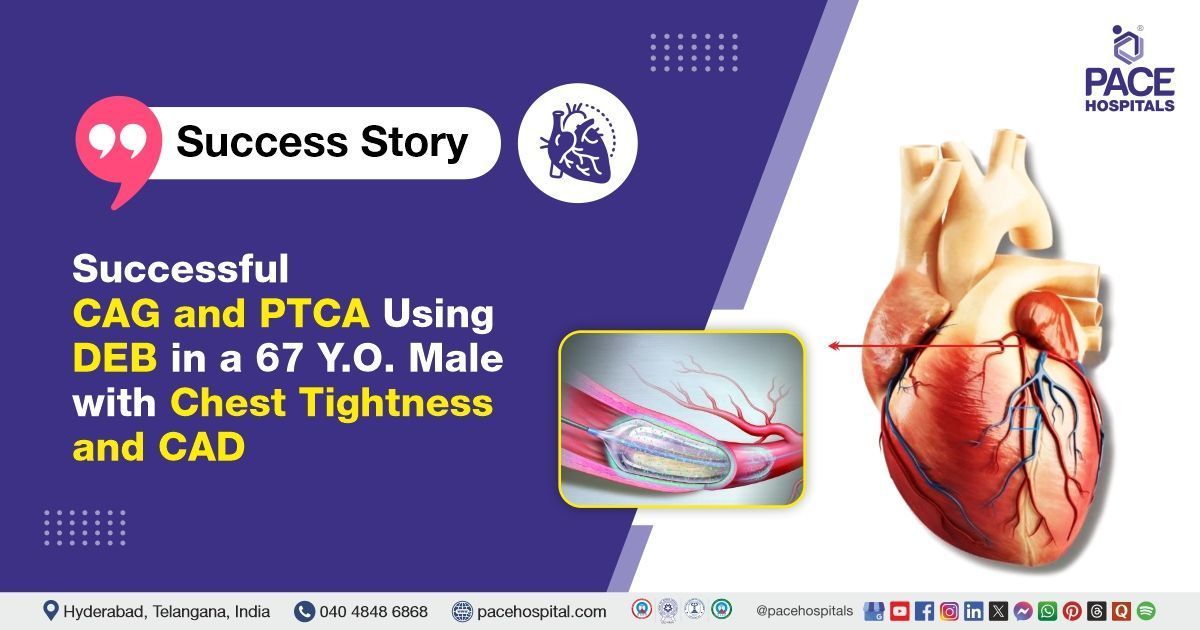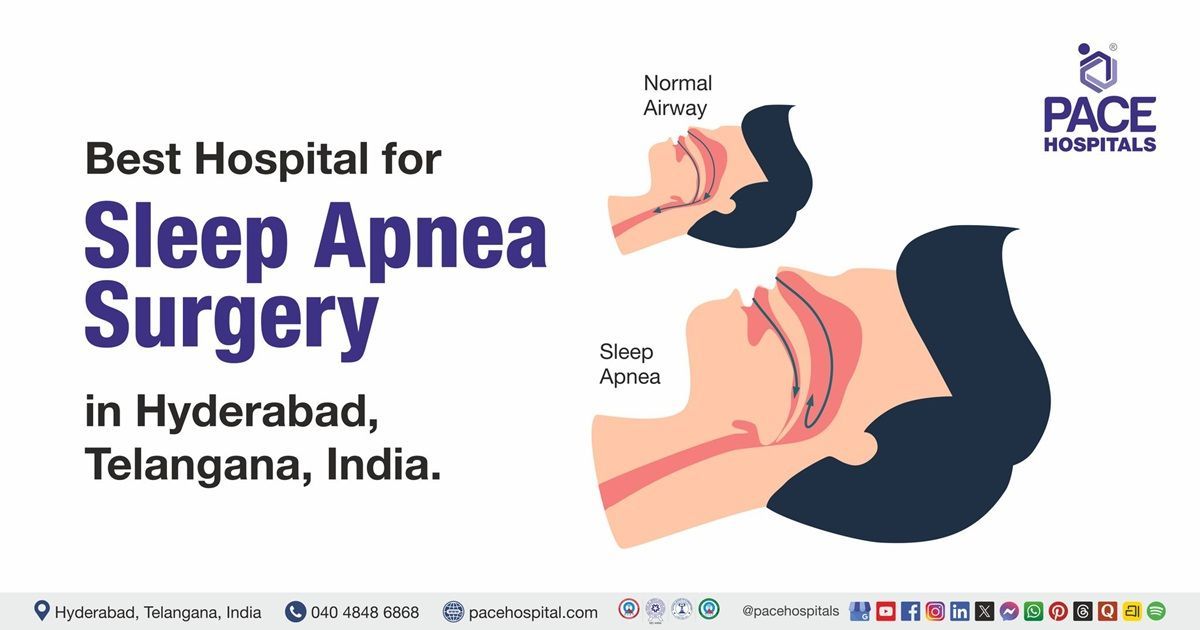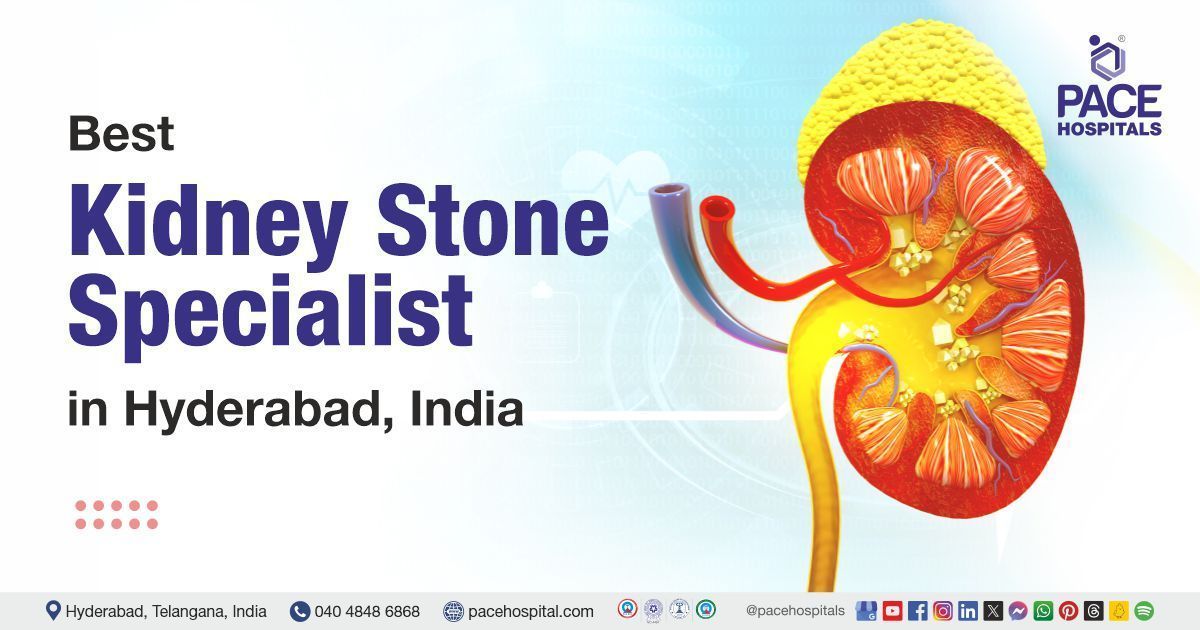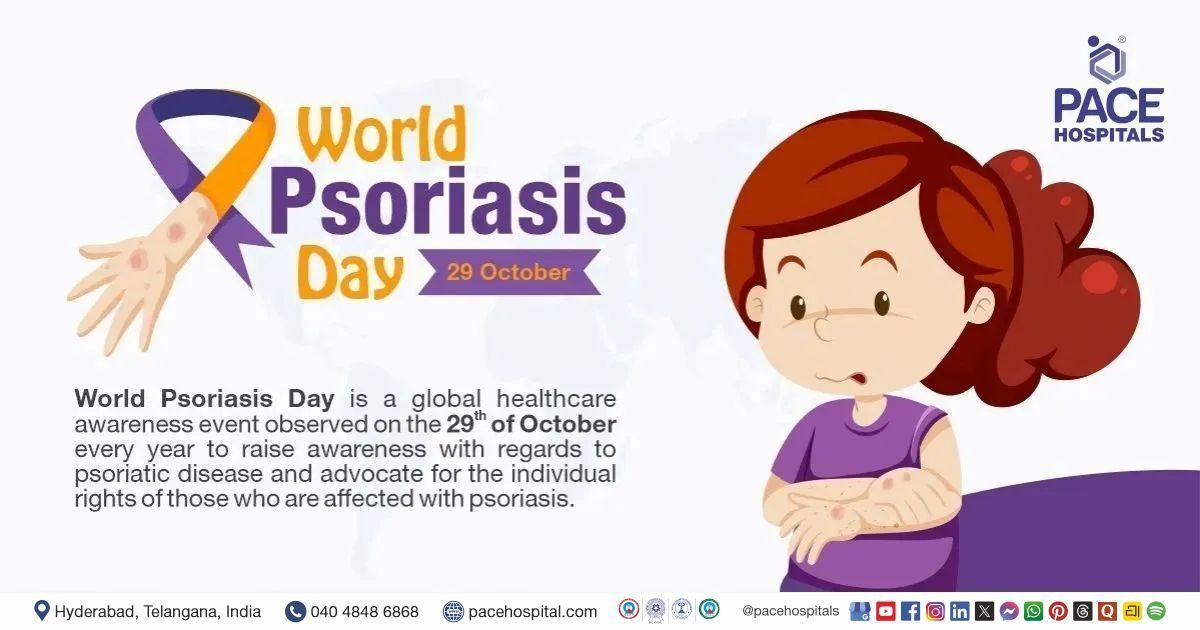Successful CAG & PTCA Using DEB in a 67 Y.O. Male with Chest Tightness & CAD
PACE Hospitals’ expert cardiology team successfully performed coronary angiography (CAG), followed by percutaneous transluminal coronary angioplasty (PTCA) using a drug-eluting balloon (DEB) to the left anterior descending (LAD) artery in a 67-year-old male patient who presented with complaints of intermittent chest tightness over the past 1 month. The procedure aimed to restore proper blood flow to the heart muscle, relieve symptoms, and lower the risk of future cardiac events.
Chief Complaints
A 67-year-old male patient with a
body mass index (BMI) of 22.2 presented to the cardiology Department at
PACE Hospitals, Hitech City, Hyderabad, with complaints of intermittent chest tightness for the past 1 month. The nature and persistence of his symptoms raised concern for possible cardiac involvement, prompting further clinical evaluation.
Past Medical History
The patient had a known history of
type 2 diabetes mellitus, which was managed with oral hypoglycemic agents and demonstrated fair glycemic control. He also had a history of
coronary artery disease (CAD) and had undergone percutaneous transluminal coronary angioplasty (PTCA) in the past as part of his prior cardiac management. His personal history was usual, with normal sleep patterns and regular bowel and bladder habits.
On Examination
On general examination, the patient was conscious, cooperative, and oriented. There was no pallor or pedal edema observed. Vital signs were stable and within normal limits. Systemic examination revealed clear respiratory sounds with no abnormalities. Cardiovascular examination showed no murmurs. The abdomen was soft and non-tender on palpation. A neurological assessment revealed no focal deficits.
Diagnosis
After the initial examination, routine investigations were performed and revealed normal complete blood count (CBC), renal function tests (RFT), and liver function tests (LFT). The HbA1c level was 6.8%, indicating moderately controlled diabetes, while the fasting blood sugar (FBS) was elevated at 188 mg/dL.
Ultrasonography of the abdomen revealed grade 1 fatty liver with mild splenomegaly, suggesting underlying metabolic changes. Urinalysis showed 4+ sugar without proteinuria. During hospitalization, the patient experienced episodes of chest tightness, which led to a consultation with a cardiologist. A treadmill test (TMT) was performed, which was positive for ischemia, indicating possible underlying coronary artery disease. As a result, a coronary angiography (CAG) was conducted, which showed significant in-stent restenosis in the left anterior descending (LAD) artery, confirming the diagnosis and guiding further treatment options.
Based on the confirmed findings, the patient was advised to undergo Coronary Artery Disease Treatment in Hyderabad, India, under the expert care of the Cardiology Department.
Medical Decision Making
After a thorough consultation with Dr. Seshi Vardhan Janjirala (Interventional cardiologist), a comprehensive evaluation was conducted to develop an appropriate diagnostic and therapeutic plan tailored to the patient’s cardiac condition. Given his symptoms and the initial findings indicating possible coronary artery disease, the evaluation focused on assessing the extent and severity of the condition. The primary goal was to initiate timely and effective treatment to prevent further cardiac complications and enhance the patient's overall prognosis.
The patient and his family were thoroughly counseled about his condition, the need for a coronary angiogram (CAG), and the possibility of percutaneous transluminal coronary angioplasty (PTCA) to the left anterior descending (LAD) artery. The counseling included a detailed explanation of the procedure's benefits, potential risks, and the necessity of surgical intervention to prevent further complications and preserve cardiac function.
Surgical Procedure
Following the diagnosis of coronary artery disease (CAD), the patient was scheduled for an angioplasty procedure in Hyderabad at PACE Hospitals, under the expert supervision of the Cardiology Department, ensuring optimal care and a smooth recovery process.
- Pre-Procedure Preparation and Coronary Angiogram (CAG): After obtaining informed consent, the patient was prepared with pre-procedure medications. A coronary angiogram was performed to assess the extent and location of the in-stent restenosis in the left anterior descending (LAD) artery.
- Lesion Assessment and Balloon Predilatation: The severity of the restenosis in the LAD was assessed using angiography. A conventional balloon was then used to perform a pre-dilatation of the narrowed segment, ensuring it was ready for optimal drug delivery during the next step.
- Drug-Eluting Balloon (DEB) Deployment: A drug-eluting balloon (DEB) was advanced to the restenosis site in the LAD and inflated at high pressure. The DEB delivered an antiproliferative drug to the vessel wall to prevent future restenosis.
- Post-Procedure Angiography: After the balloon was deflated, a repeat angiogram was performed to ensure successful dilation of the LAD and confirm that the restenosis was adequately treated with no residual blockage.
- Completion and Follow-Up: The procedure was completed with the closure of the access site. The patient was started on dual antiplatelet therapy (DAPT) and closely monitored for complications. Follow-up visits were scheduled to assess recovery and long-term outcomes.
Postoperative Care
The procedure and post-procedure course were uneventful. The patient was managed with antidiabetic medications, statins, and dual antiplatelet therapy. Oral hypoglycemic agents were continued to maintain blood glucose control, while statins were prescribed to manage cholesterol and reduce cardiovascular risk. Dualantiplatelet therapy was initiated to prevent thrombosis and in-stent restenosis.
The patient remained stable and was discharged with instructions for lifestyle modifications, including a heart-healthy diet, regular exercise, and smoking cessation, along with the recommendation for regular follow-up visits.
Discharge Medications
Upon discharge, the patient was prescribed a combination of oral antiplatelettherapy to prevent thrombosis and in-stent restenosis. Antidiabetic medications were continued to manage blood glucose levels. Additionally, ACE inhibitors were prescribed to control blood pressure and protect kidney function. Vitamin supplements were also recommended to support overall health. The patient was advised to adhere to the prescribed medications, monitor blood glucose levels, and make necessary lifestyle changes.
Advice on discharge
The patient was advised to follow a low-salt diet to manage blood pressure and reduce cardiovascular risk, along with a diabetic-friendly diet to maintain optimal glucose levels and prevent complications related to diabetes.
Emergency Care
The patient was informed to contact the emergency ward at PACE Hospitals in case of any emergency or development of symptoms such as chest pain, abdominal pain, and fever.
Review and Follow-Up
The patient was advised to return for a follow-up visit with the cardiologist at PACE Hospitals, Hyderabad, after one month with fasting blood sugar (FBS), renal function tests (RFT), electrocardiogram (ECG), and a 2D echocardiogram to assess his recovery. Additionally, a review with the cardiologist was scheduled one week after discharge to evaluate his progress.
Conclusion
This case demonstrates the effectiveness of Percutaneous Transluminal Coronary Angioplasty (PTCA) using a drug-eluting balloon (DEB) in treating in-stent restenosis and managing coronary artery disease. The procedure successfully restored blood flow in the left anterior descending artery, relieving symptoms and preventing further complications.
The Role of Drug-Eluting Balloons (DEB) in Modern Cardiology
In interventional cardiology, Drug-Eluting Balloons (DEBs) are an advanced therapeutic option used by cardiologist/heart specialist. In comparison with stents, DEBs do not leave a permanent implant behind; instead, they deliver medication—directly to the artery wall during balloon inflation. This maintains the artery's natural flexibility while preventing restenosis, or re-narrowing.
DEBs are particularly helpful in treating complex lesions where stenting might not be the best option, small vessel disease, and in-stent restenosis. Patients who are unable to take prolonged dual antiplatelet therapy can also benefit from them. DEBs provide a minimally invasive, safe, and efficient way to treat coronary artery disease by combining mechanical dilatation with targeted drug delivery.
Share on
Request an appointment
Fill in the appointment form or call us instantly to book a confirmed appointment with our super specialist at 04048486868











